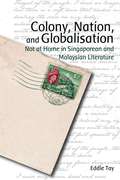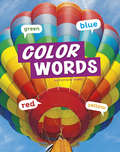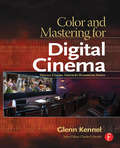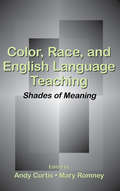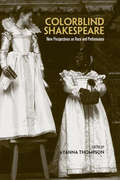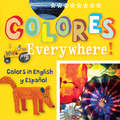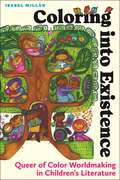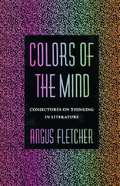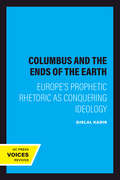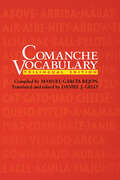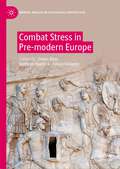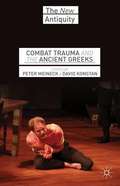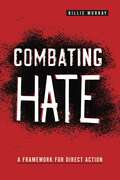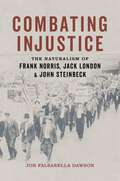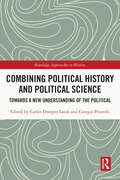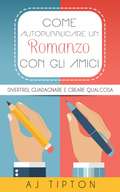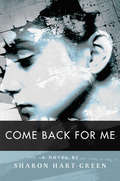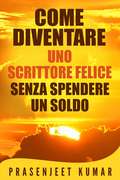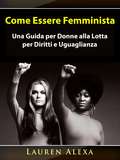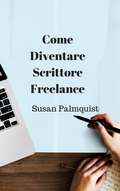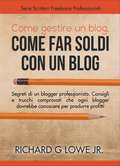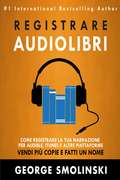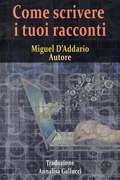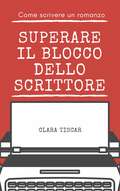- Table View
- List View
Colony, Nation, and Globalisation
by Eddie TayThis book explores colonial and post-colonial literatures of Singapore and Malaysia. It traces in them a history of anxiety that attends to the notion of home. The premise is that home is a physical space as well as a symbolic terrain invested with social, political, and cultural meanings. Eddie Tay is assistant professor of English, Chinese University of Hong Kong.
Color Words (Word Play)
by Carrie B. SheelyRed, green, purple, and yellow! Colors make our world so vibrant! Bring color words to young learners, and watch their vocabularies grow! Words are carefully matched to engaging photos that will keep children captivated from beginning to end.
Color and Mastering for Digital Cinema
by Glenn KennelColor and Mastering for Digital Cinema explores the implications for motion picture post production processes and changes required to the supporting equipment and software. While a new concept to the motion picture community, the selection of the wide gamut, output-referred XYZ color space for digital cinema distribution is based on decades of color science and experience in other industries. The rationale for choosing XYZ and the other color encoding parameters is explained and the book also provides a full case study of the development of DLP Cinema® projectors by Texas Instruments. Finally, this book explores how the XYZ color encoding concept can be extended to support enhanced display technologies in the future.This book contains:* Brilliant 4-color illustrations that compliment the color science explanations * Never before published industry information from author Glenn Kennel, a world leader in digital cinema color technology * Descriptions of key issues and background on decisions that were made in the standardization processBy Glenn Kennel, Glenn Kennel is VP/GM of Feature Film Services at Laser Pacific Media Corporation, a leading provider of a full range of post production services for television and feature film. Recently, he worked for the DLP Cinema group of Texas Instruments in a role that included technology and business development. Previously, in a twenty year career with Kodak, he led the development of the Cineon digital film scanners and laser recorders and the prototype HDTV telecine that became the Spirit Datacine. As a consultant, he helped DCI draft the technical specifications for digital cinema. Kennel also chairs the SMPTE DC28 Color ad hoc group and the DC28.20 Distribution working group. He is a SMPTE Fellow and has received the SMPTE Journal Award. He is also a member of the Academy of Motion Picture Arts and Sciences.
Color, Race, and English Language Teaching: Shades of Meaning
by Andy Curtis Mary RomneyThe unique contribution of this book is to bring together Critical Race Theory and narrative inquiry and apply them specifically to a largely overlooked area of experience within the field of TESOL: What does it mean to be a TESOL professional of color? To address this question, TESOL professionals of color from all over the world, representing a wide range of racial, ethnic, and cultural backgrounds, offer accounts of their own experiences, responding to two related questions:*Can you identify critical events or conditions in your personal or professional life that are the result of you being a person of color that affect who you are now and what you do as a TESOL professional of color?*What have you learned from these events or conditions that have had a bearing on your life as a TESOL professional of color? Color, Race, and English Language Teaching: Shades of Meaning is intended for researchers, professionals, and students in the field of English language teaching. The book is designed as a text for MATESOL programs and courses that deal with issues of language, culture, and teaching. The introduction presents a brief overview of relevant aspects of Critical Race Theory, narrative inquiry, and educational research. Focus questions for each chapter are included to help readers apply aspects of the narratives to their own experience.
Colorblind Shakespeare: New Perspectives on Race and Performance
by Ayanna ThompsonThe systematic practice of non-traditional or "colorblind" casting began with Joseph Papp's New York Shakespeare Festival in the 1950s. Although colorblind casting has been practiced for half a century now, it still inspires vehement controversy and debate.This collection of fourteen original essays explores both the production history of colorblind casting in cultural terms and the theoretical implications of this practice for reading Shakespeare in a contemporary context.
Colores Everywhere!
by San Antonio Museum of ArtWhat better way to learn colors than with eye-catching works of art? With art from across Latin America and beyond, children will become armchair world travelers and art connoisseurs. This bilingual edition introduces early readers, and earlier listeners, to colors in both English and Spanish.
Colores Everywhere!
by San Antonio Museum of ArtWhat better way to learn colors than with eye-catching works of art? With art from across Latin America and beyond, children will become armchair world travelers and art connoisseurs. This bilingual edition introduces early readers, and earlier listeners, to colors in both English and Spanish.
Coloring into Existence: Queer of Color Worldmaking in Children’s Literature
by Isabel MillánWinner, 2024 ILBA Gold Medal, "Best LGBTQ+ Themed Book" , given by the International Latino Book Awards Winner, 2024 ILBA Silver Medal, "The Raul Yzaguirre Best Political/Current Affairs Book", given by the International Latino Book AwardsArgues that queer picture books with main characters of color can disrupt structures of power in both literature and real lifeColoring into Existence investigates the role of authors, illustrators, and independent publishers in producing alternative narratives that disrupt colonial, heteropatriarchal notions of childhood. These texts or characters unsettle the category of the child, and thus pave the way for broader understandings of childhood. Often unapologetically politically motivated, queer and trans of color picture books can serve as the basis for fantasizing about disruptions to structures of power, both within and outside literary worlds. Fusing literary criticism and close readings with historical analysis and interviews, Isabel Millán documents the emergence of a North American queer of color children’s literary archive. In doing so, she considers the sociopolitical circumstances out of which queer of color children’s literature emerged; how a queer and trans of color aesthetic translates to picture books; and how the acts of imagination and worldmaking inspired by picture books produce a realm of freedom, healing, and transformation for queer and trans of color children and adults. Coloring into Existence explores the curious ways that queer and trans of color publications “color outside the lines”—refusing to conform to industry standards, intermixing fiction with nonfiction, and mobilizing alternative modes of production and distribution to create new worlds.
Colors of the Mind: Conjectures on Thinking in Literature
by Angus FletcherAngus Fletcher is one of our finest theorists of the arts, the heir to I. A. Richards, Erich Auerbach, Northrop Frye. This, his grandest book since the groundbreaking Allegory of 1964, aims to open another field of study: how thought--the act, the experience of thinking--is represented in literature.
Columbus and the Ends of the Earth: Europe's Prophetic Rhetoric as Conquering Ideology
by Djelal KadirColumbus is the first blazing star in a constellation of European adventurers whose right to claim and conquer each land mass they encountered was absolutely unquestioned by their countrymen. How a system of religious beliefs made the taking of the New World possible and laudable is the focus of Kadir's timely review of the founding doctrines of empire.The language of prophecy and divine predestination fills the pronouncements of those who ventured across the Atlantic. The effects of such language and their implications for current theoretical debates about colonialism and decolonization are legion. Kadir suggests that in this supposedly postcolonial era, richer nations and the privileged still manipulate the rhetoric of conquest to justify and serve their own worldly ends. For colonized peoples who live today at the "ends of the earth," the age of exploitation may be no different from the age of exploration.
Comanche Vocabulary: Trilingual Edition (Texas Archaeology and Ethnohistory Series)
by Manuel García Rejón&“This is the most important pre-reservation document that we have for the Comanche language . . . It should be in every university research library.&” —James A. Goss, Professor of Anthropology, Texas Tech University The Comanche Vocabulary collected in Mexico during the years 1861–1864 by Manuel García Rejón is by far the most extensive Comanche word list compiled before the establishment of the Kiowa-Comanche-Apache Reservation in 1867. It preserves words and concepts that have since changed or even disappeared from the language, thus offering a unique historical window on earlier Comanche culture. This translation adds the English equivalents to the original Spanish-Comanche list of 857 words, as well as a Comanche-English vocabulary and comparisons with later Comanche word lists. Daniel J. Gelo&’s introduction discusses the circumstances in which García Rejón gathered his material and annotates significant aspects of the vocabulary in light of current knowledge of Comanche language and culture. The book also includes information on pictography, preserving a rare sample of Comanche scapula drawing. This information will help scholars understand the processes of language evolution and cultural change that occurred among all Native American peoples following European contact. The Comanche Vocabulary will also hold great interest for the large public fascinated by this once-dominant tribe.
Combat Stress in Pre-modern Europe (Mental Health in Historical Perspective)
by Jason Crowley Kathryn Hurlock Owen ReesThis book examines the lasting impact of war on individuals and their communities in pre-modern Europe. Research on combat stress in the modern era regularly draws upon the past for inspiration and validation, but to date no single volume has effectively scrutinised the universal nature of combat stress and its associated modern diagnoses. Highlighting the methodological obstacles of using modern medical and psychological models to understand pre-modern experiences, this book challenges existing studies and presents innovative new directions for future research. With cutting-edge contributions from experts in history, classics and medical humanities, the collection has a broad chronological focus, covering periods from Archaic Greece (c. sixth and early fifth century BCE) to the British Civil Wars (seventeenth century CE). Topics range from the methodological, such as the dangers of retrospective diagnosis and the applicability of Moral Injury to the past, to the conventionally historical, examining how combat stress and post-traumatic stress disorder may or may not have manifested in different time periods. With chapters focusing on combatants, women, children and the collective trauma of their communities, this collection will be of great interest to those researching the history of mental health in the pre-modern period.
Combat Trauma and the Ancient Greeks
by David Konstan Peter MeineckThis ground-breaking book applies trauma studies to the drama and literature of the ancient Greeks. Diverse essays explore how the Greeks responded to war and if what we now term "combat trauma," "post-traumatic stress," or "combat stress injury" can be discerned in ancient Greek culture.
Combating Hate: A Framework for Direct Action (Rhetoric and Democratic Deliberation)
by Billie MurrayThe United States has a hate problem. In recent years, hate speech has led not only to deep division in our politics but also to violence, murder, and even insurrection. And yet established constitutional jurisprudence holds that all speech is protected as “content neutral” and that the proper democratic response to hateful expression is not regulation but “more speech.” So how can ordinary citizens stand up to hate groups when the state will not?In Combating Hate, Billie Murray proposes an answer to this question. As a participant in anti-racist and anti-fascist protests, including demonstrations against the Ku Klux Klan, neo-Nazis, and the Westboro Baptist Church, Murray witnessed firsthand the limitations of the “more speech” approach as well as the combative tactics of anti-fascist activists. She argues that this latter group, commonly known as antifa, embodies a radically different strategy for combating hate, one that explodes the myth of content neutrality and reveals hate speech to be a tactic of fascist organizing with very real, highly anti-democratic consequences. Drawing on communication theory and this on-the-ground experience, Murray presents a new strategy, which she calls “allied tactics,” rooted in the commitment to affirm, support, and even protect those who are the victims of hate speech.Engaging and sophisticated, Combating Hate contends that there are concrete ways to fight hate speech from the front lines. Murray’s urgent argument that we reconsider how to confront and fight this blight on American life is essential reading for the current era.
Combating Injustice: The Naturalism of Frank Norris, Jack London, and John Steinbeck
by Jon Falsarella DawsonIn Combating Injustice, Jon Falsarella Dawson approaches American literary naturalism as a means of social criticism, exploring the powerful economic arguments and commentaries on labor struggles presented in novels by Frank Norris, Jack London, and John Steinbeck. Making use of extensive archival research, Dawson considers many of the original periodical sources that fueled books from McTeague to The Grapes of Wrath, as Norris, London, and Steinbeck transformed contemporary materials into illustrations of the socioeconomic forces that shape American life. By depicting the operations of powerful individuals and institutions, these naturalist writers offered audiences a greater awareness of the plight of labor so that readers might find the inspiration to become agents of change. Works such as The Octopus, The Iron Heel, Martin Eden, and In Dubious Battle illuminate many of the central economic issues at play in the United States during the late nineteenth and early twentieth centuries, including the rise of commodity culture, labor disputes involving industrial and agricultural workers, widespread poverty, extreme inequality, and the concentration of resources and land ownership. Norris, London, and Steinbeck highlighted the dangers of these developments by charting their impact on central characters whose fates result from the predatory tactics of corporate monopolies, wealthy individuals, and large financial establishments. Dawson’s lucid analysis shows how all three writers, drawing on contemporary events, accentuated the need for reform and stressed the potential for change by human action. Each author took inspiration from notable events in California, ranging from the Mussel Slough tragedy of 1880 to the agricultural strikes in the Central Valley during the 1930s, presenting the state as a microcosm for conditions throughout the nation during a period of tremendous upheaval. Combating Injustice: The Naturalism of Frank Norris, Jack London, and John Steinbeck provides carefully contextualized readings of three major writers whose works express both the necessity for and the possibility of creating a more egalitarian society.
Combining Political History and Political Science: Towards a New Understanding of the Political (Routledge Approaches to History #52)
by Giorgia Priorelli Carlos Domper LasúsThis book shows how a multidisciplinary approach combining conceptual and methodological tools from political history and political science can help to develop a deeper understanding of contemporary political phenomena including democracy, populism, war, and forced migrations, among others. Throughout the eleven chapters, the volume brings together senior academics and early-career scholars to explore this innovative approach through a broad range of case studies which are not specific to any particular nation but are characteristic of contemporaneity worldwide. Both the international character and the interdisciplinary appeal of this book are reinforced by the fact that the editors and contributors come from different countries and diverse academic traditions. This book is aimed at scholars, researchers and postgraduate students interested in interdisciplinary approaches and working on politics and global phenomena in the twentieth and twenty-first centuries.
Come Autopubblicare un Romanzo con gli Amici
by Aj Tipton Benedetta AlciatoSei pronto a divertirti e guadagnare autopubblicando con gli amici? Scrivere può essere un lavoro difficile, solitario se fatto da soli. Ma non deve essere per forza così. Ti offriamo un metodo di autopubblicazione collaborativo e divertente. Se stai iniziando a conoscere il mondo dell’autopubblicazione, o hai già iniziato, questa è la guida per te! Come Autopubblicare Romanzi con gli Amici è un progetto indispensabile per trasformare le tue idee di storia in lavori pubblicati. Vogliamo salvarti dalla frustrazione e solitudine di provare a fare tutto da solo. AJ Tipton è un team di grande successo nell’autopubblicazione, ed abbiamo l’intenzione di rivelarti i nostri segreti, le lezioni guadagnate lavorando sodo, ed i trucchi che abbiamo imparato su questo eccitante mondo. Questo libro include: + Il modo migliore per scegliere il tuo coautore + Come scegliere genere e sottogenere + Un metodo a prova di errore per creare storie che vendono + Una guida interna per assumere freelance per l’editing, la creazione della copertina, le traduzioni, e molto altro + Trucchi di formattazione ed editing + Piattaforme di pubblicazione e domande da fare: Amazon, Kindle Unlimited, Nook, ecc. + I pro e i contro della traduzione del tuo libro + Come creare – ed usare – il tuo budget + Trucchi per un marketing di successo + Il potere dei social media + Come mantenere la tua collaborazione vantaggiosa, condividere il lavoro, e continuare a scrivere insieme E molto altro ancora! Se sei pronto ad essere creativo e a scrivere con gli amici, leggi questa guida punto per punto per iniziare ora il tuo viaggio verso l’autopubblicazione di successo!
Come Back for Me
by Sharon Hart-GreenLoss, trauma, memory, and, above all, the ties of family and being Jewish are the elements that weave together this panoramic story. Come Back for Me travels through time and place only to bring us, ultimately, to the connections between generations. Artur Mandelkorn is a young Hungarian Holocaust survivor whose desperate quest to find his sister takes him to post-war Israel. Intersecting Artur's tale is that of Suzy Kohn, a Toronto teenager whose seemingly tranquil life is shattered when her uncle's sudden death tears her family apart. Their stories eventually come together in Israel following the Six-Day War, where love and understanding become the threads that bind the two narratives together. Like Sarah's Key, Come Back for Me deals evocatively with the scars left by tragedy and the possibilities for healing.
Come Diventare Uno Scrittore Felice Senza Spendere Un Soldo
by Prasenjeet Kumar Dino De MaioDa Prasenjeet Kumar, l’autore di bestseller # 1 della serie “Autopubblicazione SENZA SPENDERE UN SOLDO” un vero e proprio manuale per vivere felicemente la professione di scrittore. Da come trovare la fonte d'ispirazione alla necessità di essere indulgenti con se stessi e lasciar da parte la critica a favore dei sogni, lo scrittore ci mostra come diffidare di corsi di scrittura creativa, editor e agenti letterari e dar sfogo alla propria creatività senza timori. Nella logica del SENZA SPENDERE UN SOLDO ci insegna a come farci creare una splendida copertina per il nostro libro a soli 5 dollari e ci invita a non diventare schiavi del controllo delle vendite. Passa poi a parlare della promozione che è necessaria, ma non deve diventare un'ulteriore fonte d'angoscia e di come stare alla larga dai truffatori in rete e fuori. Ci parla poi dei miracolosi risultati che si ottengono con il cosiddetto Effetto Composto ovvero di come tanti piccoli passi portino alla lunga ai risultati sperati. Alla fine della lettura avrai imparato molti segreti importanti sull'arte dello scrivere ma, soprattutto, se li metterai in pratica potrai diventare UNO SCRITTORE PIÙ FELICE!
Come Essere Femminista: Una Guida per Donne alla Lotta per Diritti e Uguaglianza
by Lauren AlexaSei mai stata vittima di violenza, odio, molestie e sofferenza dovuti al tuo sesso di appartenenza? Essere femminista e praticare gli ideali femministi significa combattere per cose importanti. Parità di salario, essere trattate con rispetto, tutela del congedo di maternità, diritti riproduttivi, violenza domestica e molto altro. Se desideri saperne di più sulla lotta per i tuoi diritti e per aiutare le donne di tutto il mondo a combattere per i propri, allora questa guida fa al caso tuo. - Impara a essere femminista. - Impara a combattere per i tuoi diritti. - Lotta per l’uguaglianza e per la parità di salario. - E Molto Altro! Scopri come fare per stare dalla parte giusta della nostra storia, aiutando l’umanità dov’è più necessario! --> Scorri verso la parte alta della pagina e clicca su “aggiungi al carrello” per effettuare immediatamente l’acquisto Disclaimer: L’autrice e/o i titolari dei diritti non avanzano pretese, promesse o garanzie relativamente all’accuratezza, alla completezza o all’adeguatezza dei contenuti di questo libro, e declinano espressamente qualsiasi responsabilità legata a eventuali errori od omissioni presenti. Il prodotto va inteso solo come riferimento. Si prega di consultare un/una professionista prima di agire sulla base dei contenuti ivi compresi.
Come diventare scrittore freelance
by Susan PalmquistChe sia per guadagnare un piccolo extra, per renderlo un lavoro full-time, per avere un trampolino di lancio prima di iniziare a scrivere libri… Hai mai pensato di diventare uno scrittore freelance? Se la risposta è sì, questo libro è fatto apposta per te. Imparerai: come creare un portfolio; come procurarti i primi agganci senza esperienza pregressa; l’importanza dello studio del tuo mercato d’interesse e il modo in cui farlo perché ti sia d’aiuto; i tipi di scrittura freelance; come raccogliere le idee; come fare il primo passo nel modo giusto; a lavorare con i redattori; cosa fare una volta ottenuto l’incarico; come trovare e intervistare gli esperti giusti per il tuo articolo; come fare per continuare a ricevere incarichi; a gestire tempo e introiti.
Come gestire un blog, Come far soldi con un blog.
by Richard G Lowe Jr Ylenia PatuzziC'è un'arte nello scrivere un articolo che ha la proprietà di invogliare il lettore ad agire. Questo è il filo conduttore del libro che state leggendo sul vostro Kindle proprio ora. Qui, imparerete come si crea un articolo che ottenga l'interesse del lettore, lo affascini, lo informi e lo spinga a prendere una decisione entro la fine della lettura. Il libro che state leggendo descrive i metodi che uso per creare articoli per blog che hanno lo specifico obiettivo di operare su una persona dal momento in cui clicca sul link fino a che preme il bottone compra o sottoscrivi sul fondo della pagina. Imparerai: * Come creare un titolo che attira il lettone nel tuo articolo * Cosa mettere "sopra la piega" * Aggiungere innesti emozionali * Connetterti coi tuoi lettori * Cos'altro aggiungere al tuo articolo * Far si che premano "Compra" * Quanto sono importanti le immagini? * E i video?
Come registrare il tuo audiolibro per Audible, iTunes, ed altre piattaforme
by George Smolinski Mattia BarattoQuesta è una guida completa con istruzioni video che vi permetterà di registrare il vostro audiolibro. Lo so perchè ho utilizzato QUESTE STESSE TECNICHE per registrare questo stesso libro per Audible! Gli audiolibri sono la più grande novità nell'ambito delle pubblizazioni oggigiorno. C'è stata una crescita esplosiva di vendite di audiolibri negli ultimi 4 anni, e voi dovete avere il vostro libro in formato audio. Questa guida vi insegnerà gli ingressi e le uscite della registrazione di audiolibri, anche se lo volete fare da soli! Argomenti discussi in questa guida: 1. L'equipaggiamento necessario per registrare audiolibri e narrazioni 2. Come iniziare a registrare audiolibri con GarageBand e Audacity 3. Consigrli e trucchi per aiutarvi partire con il piede giusto nella narrazione di audiolibri 4. Come caricare il vostro libro finito su Audible e iTunes libri 5. Risorse utili per far produrre il vostro audiolibro se non siete bravi con il fai-da-te
Come scrivere i tuoi racconti
by Miguel D'AddarioCONTENUTI - Obiettivi Narrare distinti testi letterari.Punti di vista, dialoghi, spazio, tempo. Conoscere le basi del racconto come genere letterario. Scoprire la struttura d’approccio, il nodo e la soluzione. - Metodologia Proposta d’analisi di determinati racconti. Partecipazione attiva inerente alle proposte offerte. Le proposte di lavoro vengono intese da un punto di vista descrittivo in modo da poter analizzare diversi tipi di testo. Il corso è suddiviso nelle seguenti parti: analisi del racconto, struttura, genere, spazio e tempo, personaggi, esercizi scritti per gli alunni del corso, scrittura e produzione di un testo personale. - Programma Primo avvicinamento al concetto di racconto. Lo scrittore come ricettore ed emittente. Lettura ed analisi di un racconto. L’invenzione di un mondo possibile. Elaborazione della finzione a partire da una situazione quotidiana. Proposta di scrittura. L’importanza della propria esperienza intesa come impulso per una scrittura creativa. La consistenza dei ricordi (riguardanti i vicini o i conoscenti). Proposta di scrittura. La manipolazione della realtà e della propria esperienza: elaborazione dei racconti. Proposta di scrittura. I punti di vista e la persona narrativa. Analisi dei racconti. Proposta di scrittura. Il racconto, il racconto breve. Proposta di scrittura. Linee guida per la creazione di racconti. Quadri riassuntivi.
Come scrivere un romanzo - Superare il blocco dello scrittore
by Corrado Pastore Clara TiscarVuoi scrivere ma soffri di una sorta di blocco? Provi una sensazione di panico di fronte alla pagina bianca? Se ti identifichi con le seguenti affermazioni, questo libro fa proprio al caso tuo: Voglio incominciare a scrivere ma non trovo il momento giusto Sono bloccato con il mio romanzo e non so come uscirne Ho chiara la storia che voglio raccontare ma non riesco a scriverla Non sono bloccato ma mi manca la motivazione per andare avanti a scrivere il mio romanzo Se applichi correttamente le tecniche, superare il blocco sarà molto più facile e divertente di quanto credi. Inoltre, imparerai nuovi metodi di lavoro che faranno sì che tu non ti permetteranno di non sentirti più bloccato in futuro.
